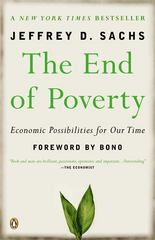Answered step by step
Verified Expert Solution
Question
1 Approved Answer
1. A firm can manufacture a product according to the production function Q = F(K, L) = K3/4 L1/4 a. Calculate the average product of
1. A firm can manufacture a product according to the production function Q = F(K, L) = K3/4 L1/4 a. Calculate the average product of labor, LPL, when the level of capital is fixed at 10 units and the firm uses 50 units of labor. How does the average product of labor change when the firm uses 170 units of labor? b. Find an expression for the marginal product of labor, MPL, when the amount of capital is fixed at 10 units. Then illustrate that the marginal product of labor depends on the amount of labor hired by calculating the marginal product of for 10 and 50 units of labor. c. Suppose capital is fixed at 50 units. If the firm can sell its output at a price of $210 per unit and can hire labor at $55 per unit, how many units of labor should the firm hire in order to maximize profits? 2. The manager of a national retailing outlet recently hired an economics to estimate the firm's production function. Based on the economist's report, the manager now knows that the firm's production functions given by Q = K1/2L1/2 and that capital is fixed at 1 unit. a. Calculate the average and marginal product of labor when 9 units of labor are utilized. b. Calculate the marginal product of labor when 9 units of labor are utilized. c. Suppose the firm can hire labor at a wage of $10 per hour and output can be sold at a price of $100 per unit. Determine the profit-maximizing levels of labor and output. d. What is the maximum price of capital at which the firm still make nonnegative profits? 3. An economist estimated that the cost function of a single products firm is C(Q) = 230 + 12Q + 8Q2 + 10Q3 Based on this information, determine: a. The fixed cost of producing 7 units of output. b. The variable cost of producing 7 units of output. c. The total cost of producing 7 units of output. d. The average fixed cost of producing 7 units of output. e. Average variable cost of producing 7 units of output. f. Average total cost of producing 7 units of output. g. The marginal cost when Q = 7
Step by Step Solution
There are 3 Steps involved in it
Step: 1

Get Instant Access to Expert-Tailored Solutions
See step-by-step solutions with expert insights and AI powered tools for academic success
Step: 2

Step: 3

Ace Your Homework with AI
Get the answers you need in no time with our AI-driven, step-by-step assistance
Get Started


